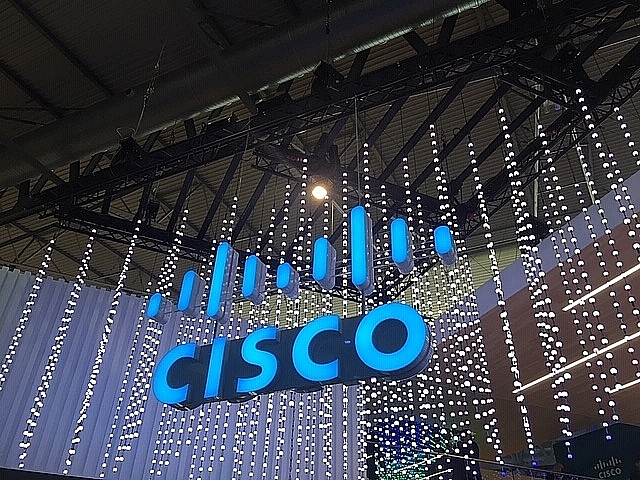New Cisco Webex Innovations bring practical benefits to companies and employees
 |
| Cisco empowers teams to work smarter, safer, and more efficiently after the pandemic |
With this backdrop, Cisco’s collaboration group recently announced innovations for both the remote and the in-office experience – to help teams stay safe and get great work done as companies navigate 2020 and beyond. With the goal of creating a 10-times better meeting experience, the innovations by Cisco – a global leader in technology – are as follows:
Webex meetings
According to the survey, 58 per cent say they will continue to work remotely eight or more days per month even after the pandemic is over – so it’s critical that companies nail the video meeting experience. Webex has a plethora of features to help users before, during, and after meetings.
Technology helps workers safely return to office post-pandemic
Companies must prepare for such changes after the pandemic as optimising their space, addressing worker concerns about sanitation and social distancing, and finding how to clearly communicate policies and information. Cisco gives customers the data and tools to make this journey back to the office in a smooth way.
More environmental sensors in Webex devices
Cisco has pioneered the use of sensors providing important environmental datapoints to users, IT, and employee experience experts to ensure a safe and comfortable workplace. Previously, Cisco announced sensors that detect ambient noise levels and count the number of people in a space. These existing sensors – and the data they collect – become more important now as they can identify underutilised or overcrowded spaces.
| Thanks to machine learning, Webex will help ensure compliance with room capacity limits, counting people, checking if they are wearing face masks – no matter where they are in the room. |
Additional sensors will now also collect data on room temperature, humidity, air quality, and light. Thanks to machine learning, Webex will help ensure compliance with room capacity limits, counting people, checking if they are wearing face masks – no matter where they are in the room. Quickly identifying workspaces with environmental roadblocks lets companies take action to improve productivity and the quality of the meeting experience, for both in-office and remote participants.
Webex Room Navigator: New devices for inside and outside meeting rooms
Cisco recently announced two versions of the new Webex Room Navigator. These are purpose-built devices that contain all the sensors mentioned above. They sit either inside or outside the meeting room to provide intelligent, safe room booking for users and deep data for IT and facility managers. The out-of-room model makes it simple to find and book a space to meet. It clearly shows when the room is free and changes the status to "booked" when you enter. Activate it with touch or – to avoid touching a possibly contaminated surface – just use your voice. The in-room model provides alerts for social distancing, cleaning schedules, and more and allows you to book from inside the space, too. Both versions have a digital signage mode – so companies can use the screens to convey important information.
Webex Control Hub: Deep, actionable workplace analytics
The Cisco survey highlighted that fewer than half of companies can measure room utilisation, which means they lack the visibility needed to set proper cleaning schedules – a top concern of employees as they contemplate returning to the office. Webex Control Hub provides this much-needed visibility.
Now it will provide historical insights into both room utilisation and room environment metrics such as rooms booked but not used, median occupancy across all spaces, and ambient noise levels. These insights provide actionable information for workplace decision-makers to optimise real estate utilisation.
“The future of work will be hybrid: people will work in the home and corporate office to varying degrees, depending on the nature of their jobs. Our mission is to make the Webex experience 10 times better than in-person interactions,” said Jeetu Patel, senior vice president and general manager, Security and Applications Group, at Cisco.
“When people have in-person interactions, we want Webex to make those experiences 10 times better than before, with our deeply integrated collaboration devices and software stack. The innovations are a great step forward in providing seamless collaboration to empower remote work in a secure way while also enabling a smart hybrid work experiences to enable safe returns to work,” Patel noted.
What the stars mean:
★ Poor ★ ★ Promising ★★★ Good ★★★★ Very good ★★★★★ Exceptional
Related Contents
Latest News
More News
- Businesses ramp up production as year-end orders surge (December 30, 2025 | 10:05)
- Vietjet chairwoman awarded Labour Hero title (December 29, 2025 | 13:06)
- How to unlock ESG value through green innovation (December 29, 2025 | 10:03)
- AI reshapes media and advertising industry (December 29, 2025 | 08:33)
- FPT and GELEX sign deal to develop blockchain tech for global markets (December 29, 2025 | 08:29)
- Vietnam’s GDP forecast to grow by 9 per cent in 2026 (December 29, 2025 | 08:29)
- Women entrepreneurs are key to Vietnam’s economic growth (December 29, 2025 | 08:00)
- Vietnam's top 500 value-creating enterprises announced (December 27, 2025 | 08:00)
- The PAN Group shaping a better future with ESG strategy (December 26, 2025 | 09:00)
- Masan Consumer officially lists on HSX, marking the next phase of value creation (December 25, 2025 | 13:20)

 Tag:
Tag:



























 Mobile Version
Mobile Version